Items
keywords is exactly
glass
-
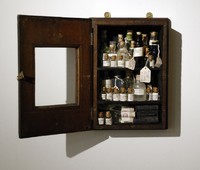
First Aid: Homage to Joseph Beuys
This work by the artist, Susan Hiller, consists of 13 vintage felt-lined wooden first aid boxes, 86 vintage bottles, water from holy wells and sacred streams, and vintage medical supplies. -
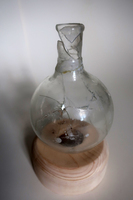
Broken
"This cabinet displayed a round-bottomed flask that broke during the installation of the exhibition, and which I attempted to mend. The accompanying BWC medicine chest manual highlights the qualities the company wanted to portray as unique to the Tabloid medicine chest and that they believed would set them apart from competitors – such as the longevity of the medicines they sold and the indestructability of the chests (BWC 1925: 2–3). Addressing the supposed indestructability of the chest by focusing specifically on the wide array of glass-stoppered bottles that form a large part of its overall contents and which, according to BWC, ensured the longevity of the medicines, this exhibit displayed a laboratory bottle of similar material, but in a state that demonstrates its fragility. As such, it subverts BWC’s grand claims of indestructability and thereby throws the rest of its claims into doubt" (Liebenberg 2021: 259). -
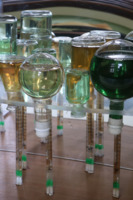
Forest
"The bottles and pipettes in 'Forest' were originally sourced from the storage rooms of the Chemistry department, where they awaited disposal. This cabinet responded to the lacuna of indigenous material represented by the chest and addressed this imbalance by filling the bottles with teas made from local medicinal plants. Staging the bottles and pipettes to simulate a forest references the prejudice of Burroughs, Wellcome and Co (BWC) against these natural remedies, ‘purifying’ them through laboratory processes before they were deemed trustworthy and marketable. This process also occluded the original source of the remedies and sowed the seeds of biopiracy. The various items of glassware in this cabinet were filled with a selection of infusions made from Balotta africana, Sutherlandia frutescens, Agathosma crenulata, Melianthus major, Mentha longifolia, Petroselinum crispum, Hypoxiz villosa and Salvia officinalis" (Liebenberg 2021: 255). -
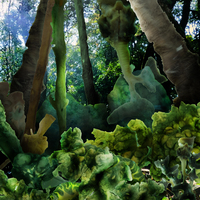
A 'Jungle'
"A ‘jungle’ consisted of a selection of pathological specimens from the Pathology Learning Centre that had been affected by typhoid fever, ascaris adult worms, yellow fever, amoebic ulcerations, tuberculosis and malaria. The diseases that afflicted these specimens were regarded as ‘tropical’. As described in Chapter One, BWC used the jungle as a significant terrain that called for a medicine chest to combat pathogens: ‘Whether you were valiantly saving your compatriot in war, traversing a dark African jungle, navigating one of the world’s first flying machines, exploring the most desolate place on earth, ascending the highest mountain in the world, or simply enjoying the windswept British coast, the chest would be there, ready for any ailment’ (Johnson 2008b: 255). BWC promoted their chests as the ideal antidote for a tropical landscape ‘at once full of potential wealth for imperial Britain, but simultaneously rife with disease’ (Johnson 2008b: 258) and claimed that the tropical colonies were ‘by far the most dangerous regions for travellers’ (BWC 1934: 8). It was here that ‘desolating ailments’ were encountered, all ‘particularly fatal to the so-called white man who originates in temperate climates’ (BWC 1934: 8). I adapted the colour of the images of afflicted intestines, livers, stomachs and brains and used them as material to construct a dense jungle that referenced this aspect of the medicine chest’s history. Printed on separate glass sections that fit into the cabinet at spaced intervals to create an illusion of depth and three-dimensionality, the work draws on the cross-sectional display technique used in many anatomy museums worldwide, in projects such as the Visible Human Project (1995) and that the artist Damien Hirst references in his works . Creating a visual link between the UCT specimens and the history of these diseases surfaces the occluded racial undertones of these understandings" (Liebenberg 2021: 267). -
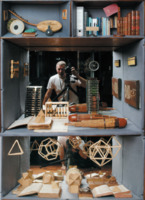
Page 135 of the Curiosity CLXXV catalogue
"Peering into one of them could, for instance, reveal musical instruments from the South African College of Music’s Kirby collection; old wooden mathematical models of abaci and polyhedrons from the Maths department; mobiles demonstrating platonic solids made by mechanical engineering students; publications by a UCT Professor of Astronomy; a sign pointing to ward D10 from the old section of Groote Schuur Hospital; glass slides once used as a teaching aid for art history at Michaelis; bird ringing material from the Avian Demography unit; and a bottle-brush plant labelled by the son of one of the curators" (Liebenberg 2021: 179). -
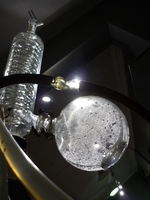
The experiment (Wine into water)
An experiment in three parts, reversing the first miracle. -
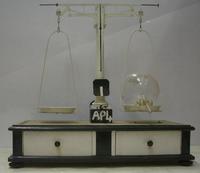
Weighing Air
An example from demonline (UCT Physics Department’s website with descriptions of educational demonstrations). Its descriptions reads: "A spherical flask of about 1 litre is suspended from one arm of a crude chemical balance. It is counterpoised by weights in the other pan, the tap attached to the sphere being open. This gives (roughly) the true weight of the glass. Unhook the sphere from the stirrup, attach the rubber tube from a rotary vacuum pump to the glass tube and evacuate for around 30s. Close tap, and re-attach stirrup. There will now be an upthrust on the flask equal to the weight of air removed, and the weights in the other pan will have to be reduced by about 1.2 g to restore the balance. Open the tap again: the air can be heard rushing into the flask (class must keep quiet), and the flask suddenly descends again". -

Similitude
"In 'Similitude', Langerman brought together a selection of objects from three disparate disciplines – glassware from chemical engineering; a skull with an arrow embedded in it and a torch used as a murder weapon from forensic pathology; and two flutes from the Kirby collection. Ignoring the assigned functions the objects performed within their respective disciplines, she chose instead to use their formal characteristics as a taxonomic device. They were all, as she described them, ‘long thin things’ (Langerman n.d.). In displacing these objects from their respective disciplines and positioning them in proximity to objects that shared this new category, she neutralised their disciplinary functions and flattened their meanings within those fields (Langerman n.d.)" (Liebenberg 2021: 183). -

A display on page 97 of the Curiosity CLXXV catalogue
"A stainless-steel dilator from the Drennan collection, a carded set of glass slides of xenopus heart sections from the Medical Microbiology collection, a 19th century game called 'Frogs and Toads' from Special Collections and a wax model of an embryo, also from Drennan. This ‘amphibian’-inspired display showcases many qualities of the curatorial method, such as visual quotation (the combination of these materials foregrounds that the shape of the dilator resembles a frog), analogy (the wax embryo, dilator and frogs allude to the resemblance between sperm and tadpoles) and juxtaposition (the frog as a scientific topic dissected and contained in the slides, and the frog as a board piece in a game played by children)" (Liebenberg 2021: 183). -

Hosts and Carriers
A selection of glass slides of the insects, ticks and worms that are the primary or intermediate hosts or carriers of human diseases. These slides also featured in the 'Curiosity CLXXV' and 'Subtle thresholds' exhibitions, sourced from the Pathology Learning Centre (PLC), where they were originally donated by the secretary of the Department of Microbiology. Dr Yeats identified them as glass photomicrographs and speculated that they were probably made for a special projector used for teaching many years ago. -

Pisces (Platichthys Fleus)
Addressing the fact that 95% of known animal species are smaller than our thumbs, yet natural history museums displays are filled with mostly large animals, this sub-museum shows the legs of a flea highlighting its muscles; a whole squid, just a couple of millimetres long; beetles that have been sliced along their entire length, through the antennae, head, legs and body — 1/10th of a millimetre thick; as well as these two baby flounder fish. -
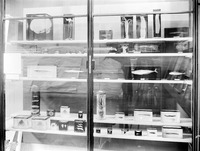
Terra Nova
Robert Falcon Scott’s Terra Nova expedition reached the South Pole on 17 January 1912 — 23 days too late. Inside a small tent supported by a single bamboo flying a Norwegian flag, was a record of the five who had been the first to reach the pole: Roald Amundsen, the leader, and his team - Olav Olavson Bjaaland, Hilmer Hanssen, Sverre H. Hassel and Oscar Wisting. On 19 January, they began their 1,300 kilometre journey home, Scott writing: “I’m afraid the return journey is going to be dreadfully tiring and monotonous” (Scott 1914: 548). -

Fish
A showcase of fish found in the Artic regions. -

A perfect day for bananafish
Extract from J.D. Salinger's 'For Esmé - With Love and Squalor' in which Seymour Glass interacts with a young girl while swimming in the ocean on holiday. “Miss Carpenter. Please. I know my business,” the young man said. “You just keep your eyes open for any bananafish. This is a perfect day for bananafish.” “I don’t see any,” Sybil said. “That’s understandable. Their habits are very peculiar.” He kept pushing the float. The water was not quite up to his chest. “They lead a very tragic life,” he said. “You know what they do, Sybil?” She shook her head. “Well, they swim into a hole where there’s a lot of bananas. They’re very ordinary-looking fish when they swim in. But once they get in, they behave like pigs. Why, I’ve known some bananafish to swim into a banana hole and eat as many as seventy-eight bananas.” He edged the float and its passenger a foot closer to the horizon. “Naturally, after that they’re so fat they can’t get out of the hole again. Can’t fit through the door.” “Not too far out,” Sybil said. “What happens to them?” “What happens to who?” “The bananafish.” “Oh, you mean after they eat so many bananas they can’t get out of the banana hole?” “Yes,” said Sybil. “Well, I hate to tell you, Sybil. They die.” “Why?” asked Sybil. “Well, they get banana fever. It’s a terrible disease.” “Here comes a wave,” Sybil said nervously. “We’ll ignore it. We’ll snub it,” said the young man. “Two snobs.” He took Sybil’s ankles in his hands and pressed down and forward. The float nosed over the top of the wave. The water soaked Sybil’s blond hair, but her scream was full of pleasure. With her hand, when the float was level again, she wiped away a flat, wet band of hair from her eyes, and reported, “I just saw one.” “Saw what, my love?” “A bananafish.” “My God, no!” said the young man. “Did he have any bananas in his mouth?” “Yes,” said Sybil. “Six.” The young man suddenly picked up one of Sybil’s wet feet, which were drooping over the end of the float, and kissed the arch. “Hey!” said the owner of the foot, turning around. “Hey, yourself! We’re going in now. You had enough?” “No!” “Sorry,” he said, and pushed the float toward shore until Sybil got off it. He carried it the rest of the way. (Salinger 1986: 20-21). -

Condensation Cube
"One of Hans Haacke’s earlier works. While over time the artist developed a critique of art as an institution and system, these early works focus on art in the sense of process and physical system. Interested in biology, ecology and cybernetics, in the mid-sixties Haacke was influenced by the ideas of Ludwig von Bertalanffy, especially those outlined in his General System Theory of 1968. For the Austrian biologist and philosopher, a living organism is an open system that continuously changes depending on its dialogue or interaction with the environment. Haacke’s early works, such as Condensation Cube, transpose this concept to the realm of art" (MACBA 2021). -

Lithograph of underwater scene
Lithograph of underwater scene by Eugen Ransonnet-Villez, from colour pencil drawings made by the artist while submerged in his diving bell, from his 'Sketches of the Inhabitants, Animal Life and Vegetation in the Lowlands and High Mountains of Ceylon' (1867) -

Breath Sculptures
In the exhibition, 'Chest: a botanical ecology', "this cabinet extended the ideas of fragility and fallibility represented by the broken glass laboratory bottle, displaying four ‘breath sculptures’ made by the five individual breaths of children who suffer from asthma: Thaakira Salie (aged 8), Ziyaad Small (aged 10), Blake Leppan (aged 9) and Jessie Allot (aged 11). Working in collaboration with the Allergy Foundation of South Africa and Andre de Jager, UCT’s resident glass blower in the Department of Chemistry, I facilitated a workshop in which the children were taught the practice of blowing glass and then produced their own sculptures by breathing into molten glass. The breath sculptures made by these children were far removed from the functional bespoke glassware usually produced in the workshop for chemical experiments or for those conducted for physics and chemical engineering (A. de Jager, personal communication, 20 August 2018)" (Liebenberg 2021: 263). -

The Northern Lights
Histology slides of the brain (human and animal), scanned and converted into video projection -

What UCT is not telling its first years
On the 19th of January 2015, an article appeared in the Cape Argus titled 'What UCT is not telling its first years' written by Dr Siona O’Connell, a staff member of the Centre for Curating the Archive, and lecturer at the university. In it she wrote about the absence of transformation in the university, evident in its lack of black academic staff, describing the campus as "mired in unarticulated tensions and divisions, many of them pivoting on race” and “guarded by the Rhodes Memorial – a significant imperialist edifice” that continues to shadow it “in many overt and covert ways” "(O’Connell 2015). In the article she pinpoints that even though, as first years, they will most certainly be greeted by the statue of Cecil John Rhodes overlooking the rugby field during their tour of the campus, their chances of being taught by a black professor during the full span of their degree, will be incredibly slim… -
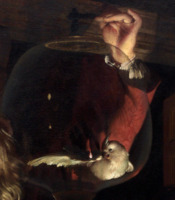
Canary
Sentinel species are used to detect risks to humans by providing advance warning of a danger. The idea of placing warm-blooded animals in a mine to detect carbon monoxide was first proposed by the Scottish physiologist John Scott Haldane in 1913. Canaries (Serinus canaria ) were considered the best sentinel animals for detection of dangerous gases because they were found to be more sensitive than other species evaluated (Pollock 2016:386-387). -
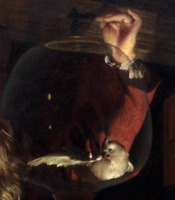
Flight
A chorus of juvenile heartbeats affected by Atrial Septal (ASD) and Ventricular Septal Defects (VSD), Patent Ductus Arteriosus(PDA), and Aortic Valve Stenosis (AVS), transposed to a higher frequency to simulate birdsong -
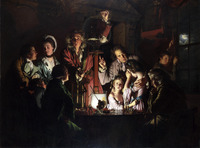
An Experiment on a Bird in the Air Pump
In Joseph Wright’s 'An Experiment on a Bird in the Air Pump' (1768), he depicts the re-enactment of Boyle’s famous experiment. Contrary to the restricted viewing of this experiment in the confines of Gresham College by the gentleman of the Royal Society, this audience includes a variety of individuals of different ages and gender, exhibiting a mixture of emotions: a young girl worriedly watches the fate of the bird, while another is comforted by her father, seemingly too upset to view the rest of the experiment; a young boy and middle-aged man look on with absorption, while two young lovers only have eyes for each other; lastly an old man meditates on a skull in a jar, and the scientist stare out at the viewer, and not at the experiment. -
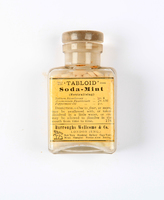
Soda-Mint
"However, this bottle was not marked ‘poison,’ so Alice ventured to taste it, and, finding it very nice (it had, in fact, a sort of mixed flavour of cherry-tart, custard, pineapple, roast turkey, toffy, and hot buttered toast), she very soon finished it off. ‘What a curious feeling!’ said Alice. ‘I must be shutting up like a telescope!’ And so it was indeed: she was now only ten inches high, and her face brightened up at the thought that she was now the right size for going through the little door into that lovely garden. First, however, she waited for a few minutes to see if she was going to shrink any further: she felt a little nervous about this; ‘for it might end, you know,’ said Alice to herself, ‘in my going out altogether, like a candle. I wonder what I should be like then?’" (Carroll 2007: 18). -
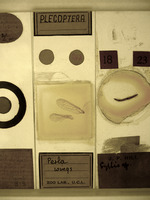
Perla Wings
Addressing the fact that 95% of known animal species are smaller than our thumbs, yet natural history museums displays are filled with mostly large animals, this sub-museum shows the legs of a flea highlighting its muscles; a whole squid, just a couple of millimetres long; beetles that have been sliced along their entire length, through the antennae, head, legs and body – 1/10th of a millimetre thick; as well as the wings of a Chrysopa perla, a fearsome predator in the insect world. -
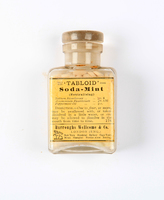
Soda-Mint (Neutralising)
"Antacid, exhilarant and stimulant. From one to three as a neutralising agent, in irritable and acid conditions of the stomach, dyspepsia, flatulence, etc. They may be swallowed with water, or be powdered and dissolved in water and taken as a draught" (BWC 1925:138). -
Quinine and Rhubarb Compound (Livingstone Rouser)
"Cathartic, tonic and anti-malarial. One to three may be taken with a little water, when an attack of malarial fever threatens, and repeated in two hours if necessary. Especially adapted for use as a purgative in the Tropics" (BWC 1925:136). The treatment, the Livingstone Rouser, was formulated by Dr Livingstone who, after an attack of malaria in 1853, patented this mixture of quinine and purgatives (calomel, rhubarb and jalop) mixed with opium. -

Blaud Pills
"The most useful preparation of iron for enriching the blood in anaemia. One, gradually increased, if necessary, to four for a dose, after meals, twice or thrice daily. 'Tabloid' Blaud Pill is also issued in combination with aloin, with arsenic and strycchine, with cascara sagrada, etc. These combinations are of value when alternative and aperients agents, etc. are required in addition to Blaud Pill" (BWC 1925:120). -
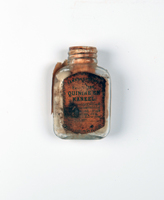
Quinine and Cinnamon/Quinine en Kaneel
Bottle of a local remedy bought by Walter Floyd to include with the contents of the chest. The torn label makes it hard to read where it was purchased, but its bi-lingual text suggests that it was used by the Afrikaans speaking population at the time, most probably as part of their ‘Huis Apotheek’. The legible part of the lable states that it is "an instantaneous cold cure" and "invaluable for influenza". -
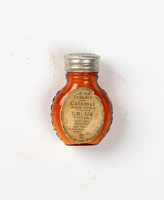
Calomel
"Alternative purgative. Use with caution. One to five of the smaller dose may be taken withh a draught of water as a cathartic and liver stimulant, or one, twice daily, as an alternative. The 5-grain dose is given in cases of jaundice accompanied by fever" (BWC 1925:122). -

Iodoform
"Since the beginning of the 20th century, iodoform has been commonly used as a healing and antiseptic dressing or powder for wounds and sores, however such clinical use to this date is limited. Iodoform is soluble in fatty acids and decomposes releasing iodine in nascent state (96,7% of iodine) when in contact with secretions or endodontic infections" (Estrela 2006: 33 - 37). -

Zinc Sulphate
"Astringent. One or two dissolved in an ounce of water, will be found useful as an eye-lotion, and as an injection or astringent lotion" (BWC 1925:144). -

Phenacetin
"One to two, powdered, and taken, if possible, in a hot liquid, will be found useful in headache, neuralgia, etc. The dose may be repeated after an interval of three hours" (BWC 1925:134). -

Opium
"Anodyne, astringent, narcotic. Use with caution. In cholera and dysentery, one to two may be taken with a little water, by an adult, according to the symptoms of the case. For the relief of pain, one my be taken every three or four hours until desired effect is obtained" (BWC 1925:133). -

Tannin
"Styptic. To stop bleeding, one or more may be pulverised, and the powder applied direct to the wound. Internally, for haemorrhage, and for dysentery, etc. One or two may be powdered and taken in a glass of water; or they may be slowly sucked of the effect be desired in the mouth or throat" (BWC 1925:140). -
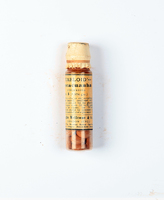
Ipecacuanha
"One thrice daily as an expectorant and diaphoretic, or for gastric irritation. In dysentery, four or more may be given with one 'Tabloid' Opium, gr.1; and four to six as an emetic in poisoning, etc. These 'Tabloid' products should be powdered and taken with a little water" (BWC 1925:129). -

Dover Powder
"Ipecacuanha with Opium. Anodyne, diaphoretic. Use with caution. One to three may be taken with a little water, on retiring, to break up a cold, or as an astringent, or for relief of pain" (BWC 1925:125) -
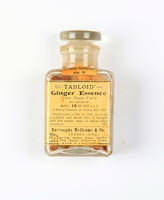
Ginger Essence
"Aromatic stimulant. One to two may be powdered and dissolved in a cup of hot water (with a little spirit if desired), and taken as a draught in colic, flatulence, etc., or as a stimulant" (BWC 1925:127). -
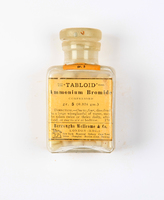
Ammonium Bromide
"Nerve sedative. One or two, dissolved in a wineglassful of water, three times a day, in hysteria, headache or neuralgia. As a sedative, four at bedtime " (BWC 1925:116). -

Hazeline (Witch Hazel)
"'Hazeline' brand witch hazel is prepared from the fresh young twigs of Hamamelis virginiana. It may be taken in doses of one to three teaspoonfuls, in water, for internal bleeding, or as an astringent in diarrhoea. Externally, it is of the highest value as an application, either plain or diluted with water, for piles and congested conditions of mucous membrane generally. It is the best application for cuts, abrasions, bruises and inflamed surfaces" (BWC 1925:128). -

Corrosive Sublimate
"Powerful antiseptic. Highly poisonous. Use with caution. Gr. 1.75 in four ounces, or gr. 8.75 in a pint of water, makes a solution of 1 in 1000, a useful strength for washing wounds, etc (BWC 1925:125). -
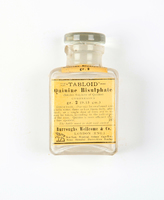
Quinine Bisulphate
"Anti-malarial, tonic. In malarial fevers, one or two should be taken every two hours. In ague, one to four should be taken, followed by a glass of water, and repeated in three hours if necessary" (BWC 1925:137). -

Compound of Tincture of Chloroform and Morphine
"Directions: For an adult, from five to ten minims may be taken in a wineglasful of water, and repeated in three to four hours, if necessary. In severe cases, the dose may be increased to fifteen minims. As this preparation contains potent posions, it should be used with caution". (As read on the lable of the bottle) "Action and Uses: In addition to its well-known use as an anaesthetic, Chloroform has been highly recommended for the relief of asthma, and in the form of vaporoles can be employed safely during the passage of calculi from the gall-bladder or kidney. The vaporoles are the most useful in obstetric practice. A vaporole may be crushed and the vapour inhaled from the palm of the hand" (BWC 1896: 38). "Morphine Sulphate: Anodyne. Use with caution. One swallowed gives great relief of pain"(BWC 1925:132). -

Iron and Arsenic Compound
"Tonic. Use with caution. One to two may be taken with a draught of water, three times daily, as a tonic during convalescence from malarial fevers, or as an alternative in skin affections" (BWC 1925:129) -
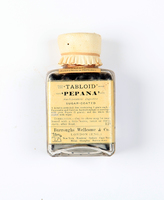
Pepana
"Digestive. One or two, swallowed whole, with a little water, after meals, in painful dyspepsia" (BWC 1925:134). -

Laxative Vegetable
"An excellent laxative or purgative, according to the dose taken. One, twice or thrice daily, in habitual constipation, or one to three at bed-time as an occasional purge" (BWC 1925:131). -
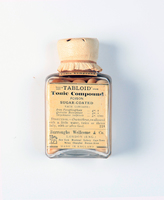
Tonic Compound
"Haematinic, tonic and stimulant. One to three, swallowed with a little water, twice or thrice daily, with or after food (BWC 1925:140).


